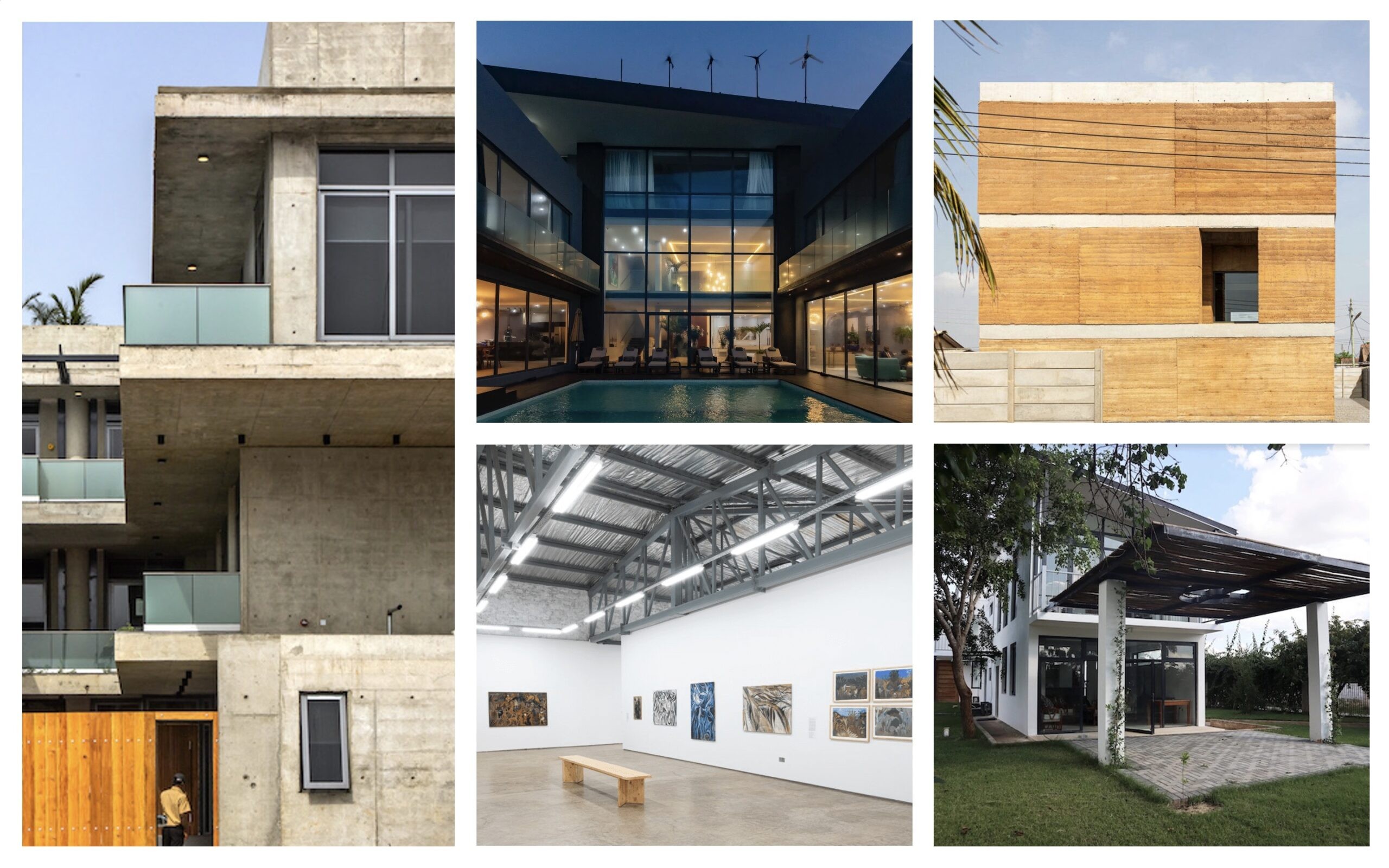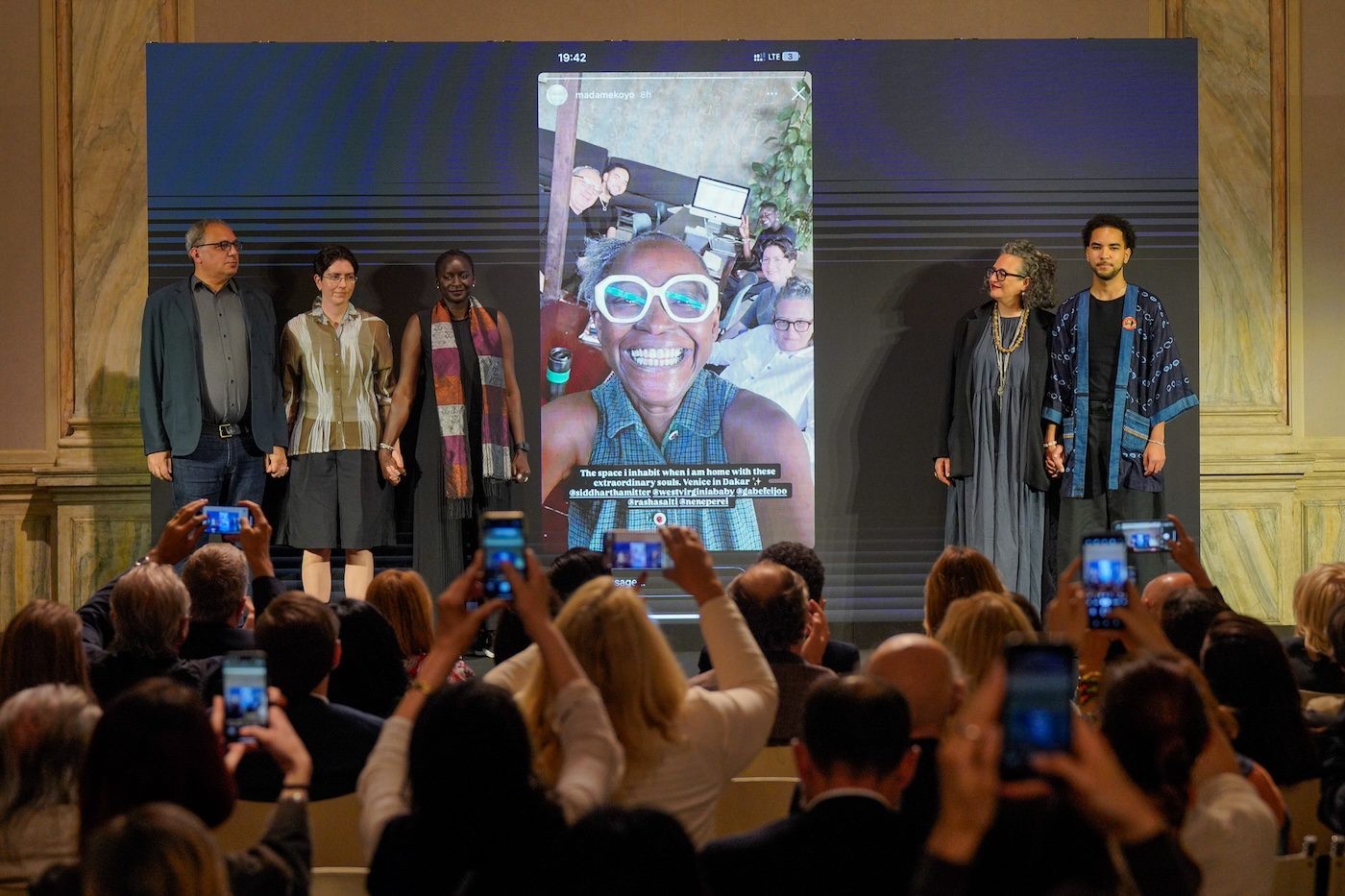Institutions Build on Art Scenes that Grew Out of Common Artistic Needs

23 May 2023
Magazine C& Magazine
Words Nantume Violet
6 min read
How do new arts hubs from Accra to Antananarivo relate to ongoing collective efforts that have enabled production in inconceivable circumstances?
With African art markets predominantly depending on foreign collectors, in the past two decades art producers have taken up a collective responsibility. This has created a fresh value and exchange system, creativity inherent with informality, and the freedom of independent production structures. Socially engaged art from the Global South innately challenges the supposed universality of capitalist artistic norms and demonstrates the role of art in promoting and configuring a collective critical consciousness.
It was harmattan season, the hot and desiccating dry evening of 17 December 2022, as we entered 254a Third Kaadjano Street in Accra. At the entrance stood a towering security guard, tactfully dressed in a black headsock. Once we entered the gray stone compound, the very young, fashionably dressed visitors gave us déjà vu of an artsy Berlin night, but with a touch of color. Big pants, big shoes, big hairstyles. Local residents and artists, curators, gallerists, patrons, and collectors from various African locations drifted from room to room, at points scrambling to see the carefully curated works which competed for space with bodies. Some paused to take in the details, others to take photos as documents of their physical presence at this particularly special moment of spectacle.
We spotted a few representatives from Amoako Boafo’s alma mater, the Academy of Fine Arts in Vienna, before heads and cameras turned in unison at the entrance of political activist Angela Davis. We were all there for the same reason: to experience world-renowned art and celebrate the long-awaited inauguration of a three-floor artist residency, foundation, and exhibition space set up by Boafo: dot. Ateliers.
dot. Ateliers was met with much excitement because it promises to bring a new level of attention and opportunity to African art scenes: a shift towards an autonomous self-affirming narrative from those marginalized and excluded from major international exhibitions and galleries. We admired the Ghanaian artist’s decision to invest in a key institution where governments had long failed them. Over the past decade, artists have increasingly used personal financial capital to build new art spaces and platforms, a development that relates back to the agency-building utopian art visions of Olabisi Silva and Okwui Enwezor. Attempts to exceed the role of the guest in global art markets by creating structures to host contemporary art productions as well as local and international audiences.
The influx of artists opening new project spaces and programs in bustling cities on the continent seemed to heighten with the opening of the artist-in-residence program Black Rock Senegal in Yoff Virage Dakar by artist Kehinde Wiley in June 2019. It was followed by Michael Armitage’s Nairobi Contemporary Art Institute in January 2020, Joël Andrianomearisoa’s Hakanto Contemporary in Antananarivo in February 2020, Yinka Shonibare’s Guest Artist Space Foundation in Ijebu in November 2022, Serge Attukwei Clottey’s 360 Projects Ghana in Accra in December 2022, and most recently Victor Mutelekesha’s Lusaka Contemporary Art Centre in January 2023. These new residencies, gallery spaces, art hubs, and other projects are optimistic about bringing new energy and engagement with studio practice, mentorship, and exhibition-making to African cities. They have become hot spots for African art scenes, attracting residents and international projects – and many see them as a testament to the longterm resilience of African art scenes.
In establishing Black Rock Residency, Kehinde Wiley desired a space of renewal, for exploring new ideas and creation, “working within the context of his lineage and outside of a Western context,” he has said in an interview with Alice Kemp-Habib. He added that his ability to open and run Black Rock proved that his “anxieties about maintaining a career outside of the center of power were just an illusion.” This sentiment cleaves with that of his African contemporaries whose establishments are significant symbolic gestures becoming material in a context of crisis. Artists have had to work without supportive institutions for years and many of their initiatives are a response to this precarity, coming from a void.
The economic rise of individual artists is not a realistic reflection of cultural policies or of the collective imaginaries responsible for the emergent African art scenes, which cannot be accounted for by this recent accumulation of financial capital. They are not the parameters through which one critically projects the sustenance of art production on the continent. The authority of collectives in these art scenes lies in a consistent vision to change things from within by multiple agents mobilizing networks. For years, these labor commons have collaborated to critique and rethink social formatting as a sounding board for collectivist and emancipatory politics.
The reinvention occurring through local productions, including guerilla art projects, emancipatory teaching programs, and radical collectivist projects, has generated a proliferation of artistic talent, a web of art, young practitioners and organizers – an environment of resourceful local artists, curators, and art producers. Now we ask whether the new art hubs will reinforce capitalist structures or undermine them by relying on a generation of already existing incubations that are redefining art scenes in their local contexts.
Although we meet this wave of art hubs across the African continent with enthusiasm through overhyped media coverage, artists with long CVs from institutions in the Global North are still content with a certain kind of visibility. A failure of critical retrospection among agents implicated in art-world capital schemes suggests the African arts community has hardly learned its lessons. The danger is that when the capitalistic machine is saturated, the art market soon takes off in search of new expressions and creativity from which to extract. According to economic geographer David Harvey, capital ruthlessly feeds upon and extracts rents “from the common life that others have produced.”
Efforts to fashion alternative modes or “art systems” with all of the attendant structures and agents have facilitated emergent scenes in the absence of traditional capital. At the core of this growth, including now various art hubs launched by internationally renowned artists on the African continent, are ongoing, longterm collective inquiries into collaboratively acquiring and improvising resources, determined efforts toward resource distribution that has enabled production in inconceivable circumstances. Unlike large and formalized institutions, they are well-suited for change in cultural and artistic production and, because their operations are often less standardized and bureaucratic, for counteracting capital temporalities.
Nantume Violet is a curator and director at UNDER GROUND, a gallery and contemporary art space in Kampala, Uganda. She has worked as cultural producer for several years and has had collaborations in Eastern Africa, Ghana, South Africa, and Germany.
Read more from

Maktaba Room: Annotations on Art, Design, and Diasporic Knowledge

Irmandade Vilanismo: Bringing Poetry of the Periphery into the Bienal

Esperanza de León: Curating Through Community Knowledge
Read more from

Naomi Beckwith Unveils Core Artistic Team for documenta 16

Fundação Bienal de São Paulo Announces List of Participants for its 36th Edition

